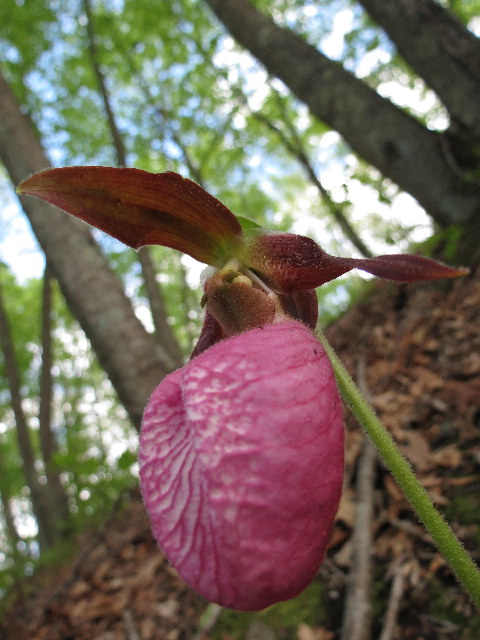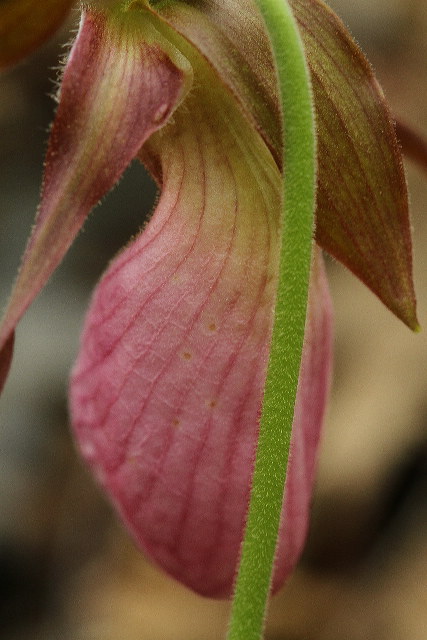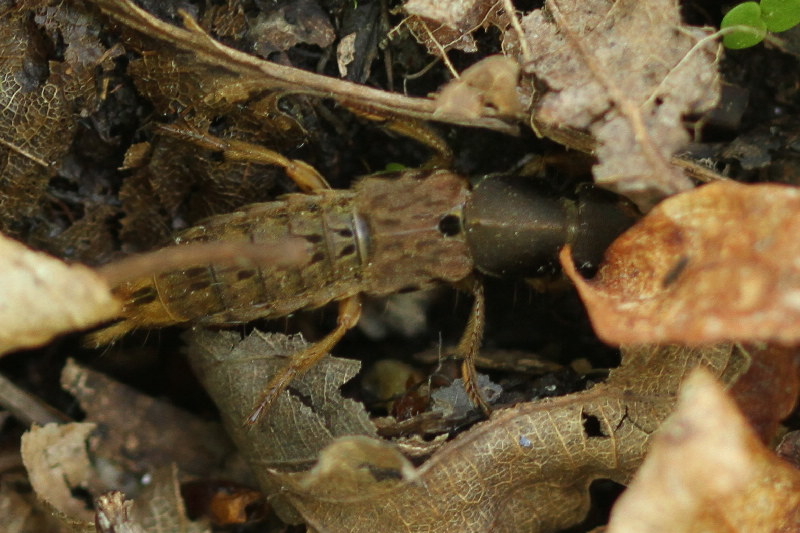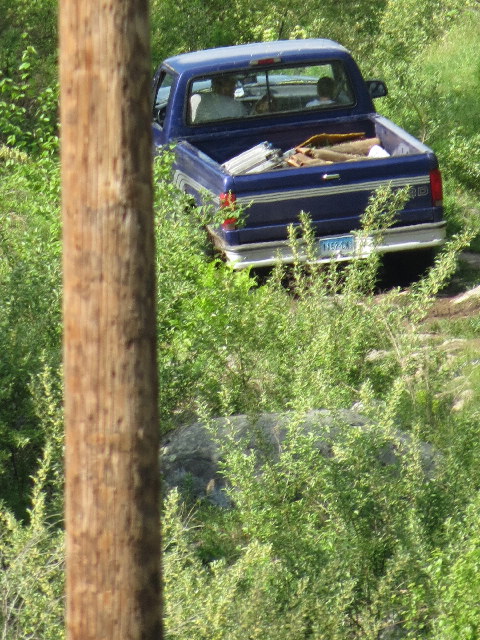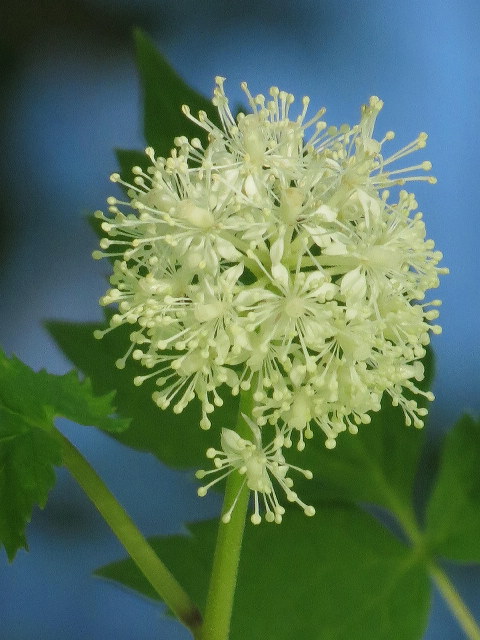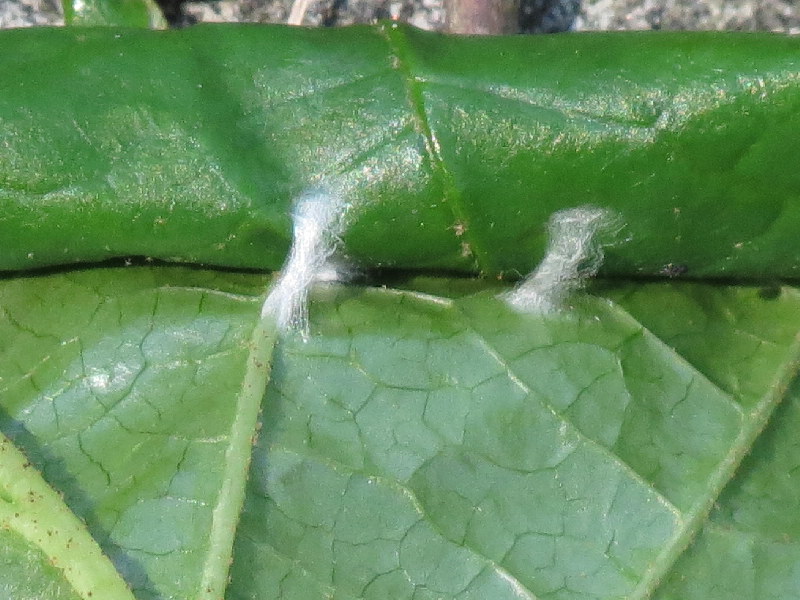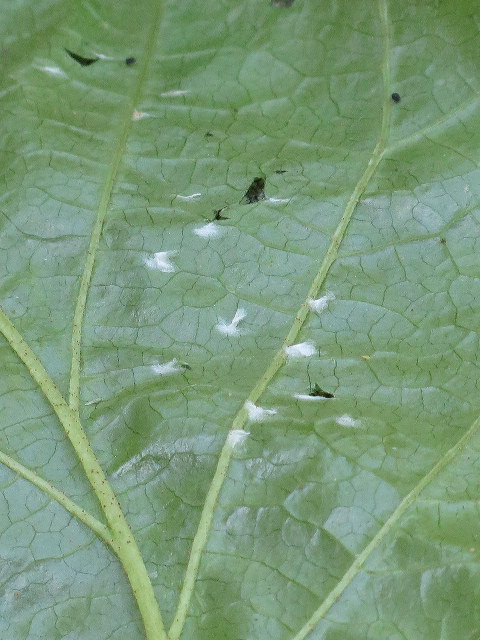Along the Air Line... 2012 - Spring, Part 10 The Air Line Trail in Eastern Connecticut - Stan Malcolm Photos |
mHome Page Stan's FlickR Albums |
May 11th. East of Route 207. Red Admirals (Vanessa atalanta) each staked a claim to a patch of sun on the trail. I must have seen a dozen. |
Pink Lady's-slipper orchids (Cypripedium acaule) were frequent along the trail borders. |
|
The yellow globe is one of a pair of pollinia. Bees enter through a slit in the pink pouch, looking for a nectar reward, but must pass by the pollinia in order to exit. When they do, a pollinium sticks to the bee's back and is transported to the stigma of another orchid. |
|
Starflower (Trientalis borealis). |
|
|
Spirobolus, a 4" long MIllipede (Narceus americanus). This was one of two I found crushed on the trail. Their defensive benzoquinones deter most predators so these probably succumbed to a boot or a bird that will know better next time. These two were probably among many millipedes dispersing in the previous night and early morning's wet weather - but failing to find shelter before meeting their fate. |
A large Rove Beetle (Family Staphylinidae). |
They're very fast. |
I noticed a truck parked near the trail under power lines about a mile east of Route 207. It managed to turn around and... |
...somehow make it back up the very rocky track. |
Back at the marsh near Route 207, there were Painted Turtles atop the Canada Goose nest, a sure sign that it had been abandoned. |
This male Rose-breasted Grosbeak (Pheucticus ludovicianus) was a special treat. |
|
May 12th. Back east of Route 207, I counted 23 Painted Turtles on the abandoned Canada Goose nest. There were probably more on the far side. |
Far across the marsh, an Osprey (Pandion haliaetus) perched. |
A bold Robin perched above it. |
The Osprey didn't seem concerned. (Nor did the Robin.) |
An Eastern Comma (Polygonia comma); another territorial species. |
Wild Sarsaparilla (Aralia nudicaulis in the Ginseng family Araliaceae). |
The flower clusters arise on a separate stalk from the multiparted leaf that shelters them. |
An Eastern Ribbon Snake (Thamnophis sauritus) is a species of special concern in Connecticut. |
Northern Water Snakes (Nerodia sipedon) are very common. This is one of several seen swimming in the beaver pond below the power lines. |
A Bullfrog (Rana catesbeiana). |
May 14th. A morning walk east of Route 207 turned up half a dozen live Spirobolus mIllipedes (Narceus americanus), as well as several more crushed on the trail. Spirobolus walks with a metachronal wave which you can see in this photo. (Think "the wave" at sporting events.) |
Iris and Violets bordering a small stream just beyond the power lines. |
May 16th. Rain drops linger on a Lady's-slipper orchid shortly after a shower passed by. |
Baltimore Orioles are singing but I've yet to find a nest. |
|
Lots of Black Cherry (Prunus serotina) in bloom. (Caterpillar food!) |
May 17th. More Spirobolus millipedes (Narceus americanus) east of Route 207. |
Watch it walk. (Sorry for the camera shake in the close up portion.) |
White Baneberry or "Doll's Eyes" (Actaea pachypoda). |
|
Eastern Chipmunk (Tamias striatus). |
Back at Raymond Brook Marsh in the afternoon. Eastern Kingbird (Tyrannus tyrannus). |
A selection of mainly-orange butterflys were about. This is a Pearl Crescent (Phyciodes tharos). |
|
A Questionmark (Polygonia interrogationis). |
American Lady (Vanessa virginiensis). |
|
Hobomok Skipper (Poanes hobomok). |
A Witch Hazel tree with many rolled leaves. |
The insect inside keeps the leaf rolled by spinning silk attachments. |
|
I snipped the silk bands in sequence to unroll the leaf... |
|
...finally revealing the caterpillar and its frass inside. |
May 20th. First Snapping Turtle (Chelydra serpentina) I've seen on the trail this year. |
|


